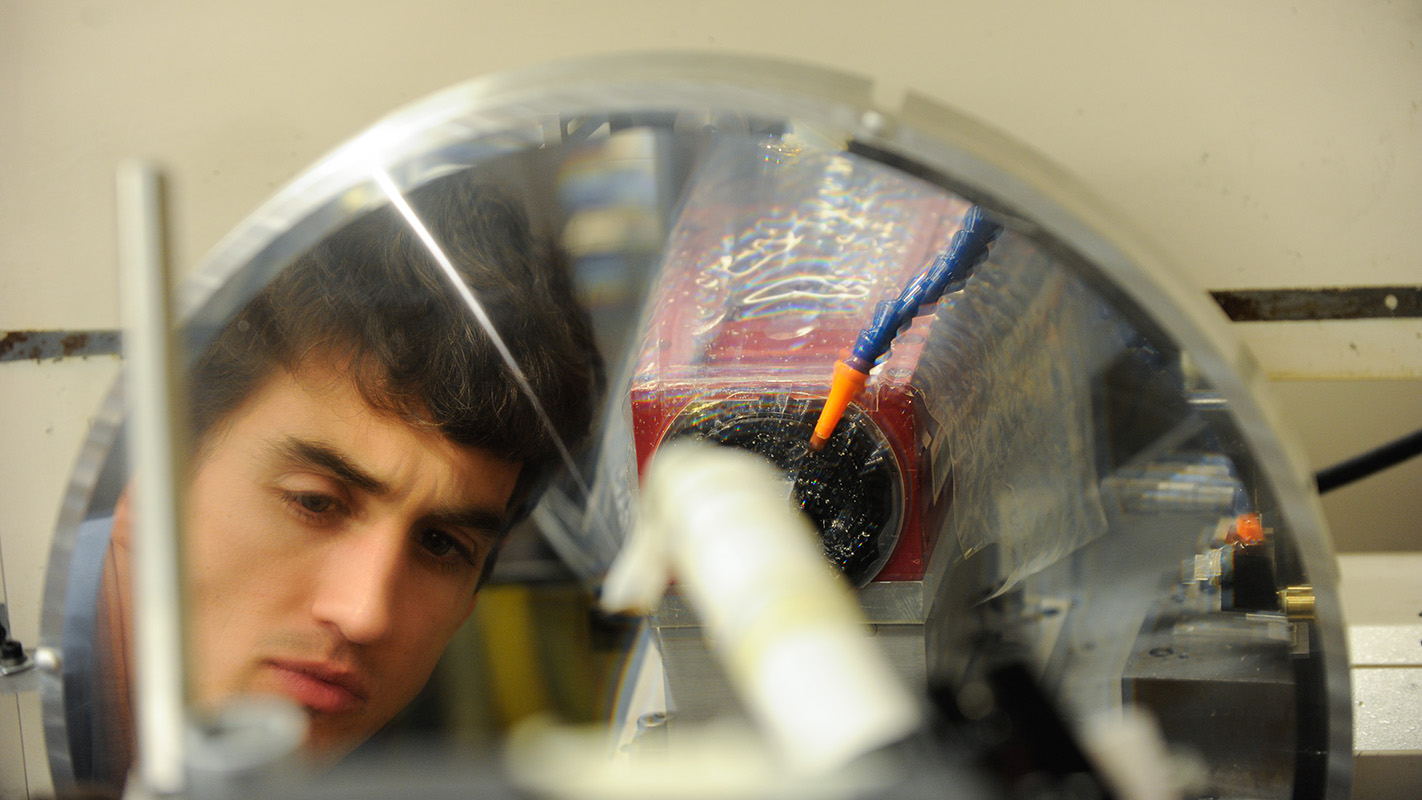Engineering Researchers Help NASA Learn More From the Stars

Editor’s Note: This is a guest post from Nicholas Chavis, a writing intern in NC State’s College of Engineering.
Telescopes created in the Precision Engineering Consortium (PEC) in NC State’s College of Engineering will help NASA scientists gain a better understanding of the process by which dense regions within molecular clouds in interstellar space, referred to as stellar nurseries, collapse to form stars. The region of interest is stars that are 2,500 light years away from the earth – meaning the light reaching the telescope left the star 2,500 years ago.
The PEC, part of the Department of Mechanical and Aerospace Engineering, is assisting NASA’s Goddard Space Flight Center with its Balloon Experimental Twin Telescope for Infrared Interferometer (BETTII). BETTII is a binocular telescope that will be launched in a balloon to 26 miles above the earth’s surface. At its heart is a prototype optical system that uses interference between the beams of infrared light captured by each telescope to measure the position and spectrum of a star. The fine resolution of this binocular telescope can distinguish between single stars and multiple stars in stellar nurseries that are usually enshrouded by dust, which hides them at visible light wavelengths. Spectral measurements of the long-wavelength infrared signal may uncover proto-planetary disks and the temperature and composition of the dust that formed them.
PEC Director Thomas A. Dow, Duncan Distinguished University Professor in Mechanical Engineering; Kenneth P. Garrard, PEC senior research scholar; and Stephen J. Furst, adjunct assistant professor in MAE are working on this NASA-funded project. The PEC has assisted with design modifications to the telescope structure and is in the process of building the optics for the pair of telescopes. Dow managed the project and, along with Furst, came up with the design for the mounting structures and the light-weighted mirrors, while Garrard programmed the machine tool-path and developed the control software. The PEC is creating two identical telescopes. Each has a 21-inch primary mirror, an eight-inch flat turning mirror and a pair of smaller mirrors to turn and shape the light beams and deliver them to the interferometer.
The key to the quality of the optical images is the shape and alignment of the mirror surfaces that create the infrared image. Faced with the need to produce these large reflective surfaces, most people would visualize careful hand finishing to create the reflective surfaces. The reality is much different. The mirrors are directly machined with a single-crystal diamond-cutting tool. The shape and edge sharpness of this diamond is carefully controlled during manufacturing and it is rigidly supported in a computer-controlled machine that keeps it within 100 nm of its target position – that is 1/10,000 of a millimeter.
To create a mirror surface that correctly shapes the optical beam, Furst utilized a PEC-created fast tool servo that allows the machine to produce surfaces that are not symmetric around the lathe’s spindle rotation center. “It’s actually a lot like regular machining,” said Furst. “It’s done on a lathe. The key differences are the diamond tool and precision control of the tool position with respect to the optical surface. The spindle floats on a cushion of air and axes on a film of oil, so there is no friction.” The 9,000-pound lathe moves and is programmed in nanometers.
The machining process takes place in a vibration-isolated lab that features a 70,000-pound concrete slab with a layer of rubber beneath it to keep the floor stable to external vibrations. The lab is kept at 20°C +/- 0.02 degrees at all times to keep thermal expansion from changing the surface shape during the machining process.
The PEC is also building a third telescope that will be displayed in a new exhibit at the Museum of Natural Sciences in Raleigh. With the development of the third primary mirror completed, the PEC will machine two 28-inch flat turning mirrors that will complete the optical system and deliver them to NASA sometime in the spring.
Once the flat turning mirrors are delivered, NASA will assemble the entire system, which will be launched from a pad in west Texas sometime in fall 2016. It is anticipated that this collaboration will lead to future joint projects between NC State and NASA Goddard, such as the creation of a much larger fabrication system or experiments that can’t be done with current equipment.
- Categories:


